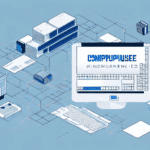Optimizing Inventory Management with UDS Systems
Effective inventory management is a cornerstone of successful businesses in manufacturing, distribution, and retail. Struggling with stockouts, overstocks, or inaccurate inventory levels can significantly impact your bottom line. Implementing a Unique Identification System (UDS) can revolutionize how you manage inventory, offering enhanced accuracy, real-time tracking, and streamlined operations. This article delves into the fundamentals of UDS, its benefits, implementation strategies, and future trends to help you optimize your inventory management.
Understanding UDS: Benefits and Fundamentals
What is UDS?
UDS, or Unique Identification System, assigns a distinct identifier to each item in your inventory. Unlike traditional barcode systems, UDS leverages technologies such as Radio Frequency Identification (RFID) to enable real-time tracking and monitoring of inventory items from receipt to shipment.
Key Benefits of UDS
- Real-Time Visibility: Gain instant insights into inventory levels, reducing the risk of stockouts and overstocks.
- Enhanced Accuracy: Minimize manual errors with automated tracking and data collection.
- Operational Efficiency: Automate tasks like stock level monitoring and report generation, freeing up staff for more strategic activities.
- Supply Chain Coordination: Improve collaboration with supply chain partners through shared, accurate inventory data.
Implementing a UDS system not only streamlines inventory management but also enables data-driven decision-making, helping businesses identify trends and optimize purchasing, production, and distribution processes.
Choosing the Right UDS for Your Inventory Management
Types of UDS Systems
- Barcodes: Cost-effective and widely used, barcodes are ideal for businesses seeking simplicity. However, they require line-of-sight scanning and can be prone to damage.
- QR Codes: Offering more data storage than barcodes, QR codes are versatile and can be scanned from a distance without direct line-of-sight. They are suitable for supply chain tracking and marketing but require compatible scanning devices.
- RFID: Providing superior accuracy and real-time tracking, RFID systems are ideal for high-volume environments. They offer automatic scanning without direct line-of-sight, though they come with higher implementation costs.
Key Considerations
- Accuracy: Determine the level of precision your business requires. RFID offers high accuracy, while barcodes may suffice for simpler needs.
- Cost: Evaluate both initial implementation and ongoing maintenance costs. Barcodes are generally more affordable, whereas RFID systems involve higher investments.
- Compatibility: Ensure the UDS integrates seamlessly with your existing software and hardware infrastructure.
- Ease of Use: Select a system that is user-friendly for your warehouse and supply chain teams to minimize training time and errors.
- Customization: Opt for a UDS that allows customization to fit your unique inventory management workflows and reporting requirements.
Implementing a UDS in Your Supply Chain
Steps to Successful Implementation
- Define Objectives: Clearly outline your inventory management goals, such as reducing stockouts or improving tracking accuracy.
- Select Technology: Choose the UDS technology that best aligns with your business needs and budget.
- Design the System: Develop the UDS framework, including software integration and hardware setup.
- Pilot Testing: Run a pilot program to identify potential issues and refine the system before full-scale deployment.
- Full Deployment: Implement the UDS across your entire inventory system, ensuring all team members are trained and equipped to use the new technology.
Continuous monitoring and evaluation are essential post-implementation to ensure the system operates efficiently. Regular maintenance, updates, and employee training will help sustain optimal performance.
Overcoming Implementation Challenges
Common Challenges
- Integration Issues: Ensuring the UDS seamlessly integrates with existing systems can be complex.
- Cost Constraints: Balancing the budget for high-quality UDS solutions against their benefits.
- Employee Resistance: Overcoming the reluctance to adopt new technologies among staff.
- Data Security: Protecting sensitive inventory data from breaches and ensuring compliance with regulations.
Strategies to Overcome Challenges
- Consult with Experts: Engage experienced UDS implementation consultants to navigate technical and logistical hurdles.
- Choose User-Friendly Systems: Invest in intuitive UDS platforms to reduce training time and increase adoption rates.
- Foster a Culture of Change: Involve employees in the implementation process and provide comprehensive training and support.
- Enhance Data Security: Collaborate with IT professionals to establish robust security measures and regularly update protocols.
Maximizing Efficiency with UDS Optimization
Best Practices
- Comprehensive Training: Develop thorough training programs to ensure employees are proficient in using the UDS.
- Regular Maintenance: Schedule routine checks and updates for UDS hardware and software to prevent downtime.
- Analyze Inventory Metrics: Continuously monitor key performance indicators to identify optimization opportunities.
- Update SOPs: Regularly revise standard operating procedures to align with evolving business processes and technology advancements.
- Stay Informed: Maintain open communication with your UDS provider to leverage new features and updates that enhance system performance.
Enhancing System Security
Regularly updating security measures is crucial for protecting your UDS system. Implement strong password policies, ensure firewall protections are active, and conduct periodic security audits to safeguard your inventory data.
Future Trends in UDS and Inventory Management
Emerging Technologies
- Internet of Things (IoT) Integration: Combining UDS with IoT devices for more comprehensive inventory tracking and management.
- Advanced Real-Time Tracking: Enhancing the precision and speed of inventory data acquisition.
- Artificial Intelligence and Machine Learning: Utilizing AI for predictive analytics and more informed inventory decisions.
These trends are set to transform inventory management by providing deeper insights, improving accuracy, and automating complex processes, thereby driving greater efficiency and reducing operational costs.
Case Studies: UDS Success Across Industries
Healthcare
A prominent hospital in the United States implemented UDS to track medical equipment and patient care items, resulting in improved resource allocation and reduced equipment loss.
Retail
A major retail chain integrated UDS to minimize stockouts and enhance in-store organization, leading to better customer satisfaction and increased sales.
Food and Beverage
A leading beverage manufacturer used UDS to monitor the movement of raw materials and finished products, which streamlined their supply chain and reduced waste.
Automotive
Automotive companies have adopted UDS to track parts throughout the manufacturing process, improving production efficiency and lowering costs.
Aviation
In the aviation sector, UDS systems are used to track aircraft components' maintenance schedules, ensuring timely servicing and reducing the risk of equipment failure.
In summary, UDS systems offer unparalleled accuracy and efficiency in inventory management, making them indispensable for businesses aiming to optimize their supply chain operations. By selecting the right UDS technology, implementing it thoughtfully, and maintaining it diligently, organizations can harness the full potential of UDS to drive success and sustain a competitive edge.
Additional Resources
- RFID Journal - Comprehensive insights and latest trends in RFID technology.
- Supply Chain Brain - Expert articles and case studies on supply chain management.
- Investopedia: Inventory Management - Detailed overview of inventory management principles and practices.




















